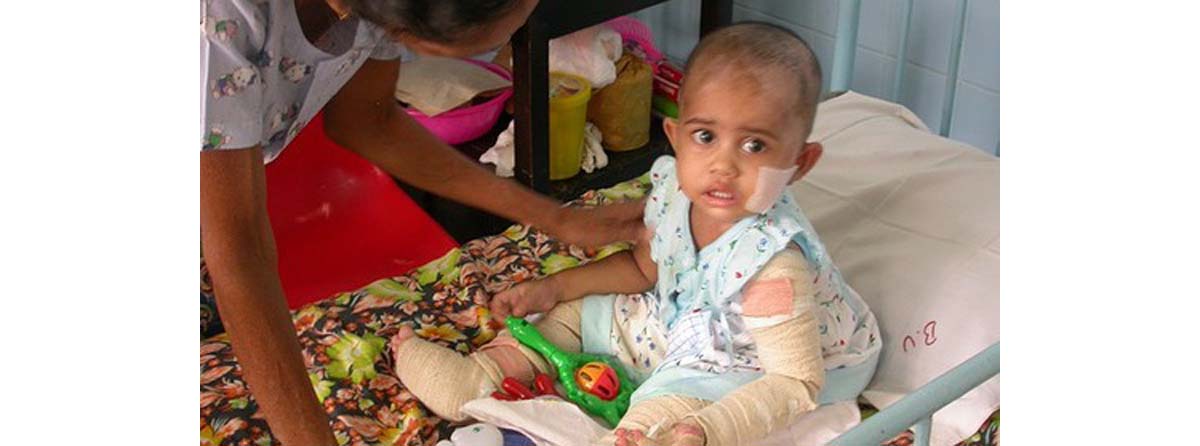Table of Contents
General Tips
Although it isn’t always possible to protect children from injuries that result in burns, there are certain precautions that can be put in place in order to decrease the risk of burns occurring. Simple steps like keeping all flammables out of children’s reach, utilizing outlet covers for all electrical outlets, discarding old, damaged or frayed electrical cords, and installing a smoke alarm on each level in the home, will dramatically reduce the chances of an injury that results in a burn.

Instruct Children
It is essential to warn children of the risks of burns and to explain safety procedures accordingly. Teens and older children should be instructed on the proper use of irons, hair dryers, curling irons and flat irons. The same should be done for toasters, blenders and other kitchen appliances.
Humidifiers
Many parents choose to use a humidifier in their children’s bedroom, especially during a cold, flu, sinus infection or respiratory illness. When doing so, make sure that a cool-mist humidifier is used to prevent steams burns that can occur when using a warm-mist or hot-steam humidifier.
Kitchen Tips
A good portion of burns that occur do so in the kitchen.
This will prevent little ones from reaching up and grabbing the hot handle. Whenever possible, try to block all access to the stove, making it difficult for children to come in contact with hot items. If you have a small child that uses a walker to cruise around the home, use a gate to block off access to the kitchen. A child in a walker can bang into tables, knocking over or spilling hot food items.
Precautions for Parents
Never drink hot beverages while holding a baby or small child or while a child is sitting on your lap.
If children are running around, refrain from carrying a hot plate of food or got beverage near them. Make sure the children are not in the kitchen when transporting hot foods from the oven to the table. Don’t ever cook while holding a baby or child in your arms.
When warming up a bottle for a baby, avoid doing so in the microwave oven, as this can cause the liquid to heat in an uneven manner. When this occurs, the breast milk or formula can develop hot pockets that can burn the baby’s mouth or lips.
Bathroom Precautions
The hot water heater should be set on the low-medium setting to prevent scalding. It does not take long for a child to be scalded by faucet water that is too hot. If the water temperature is above 140 degrees, a child can be scalded after just 5 seconds of contact with the water. Parents who live in an apartment without access to the water heater thermometer can purchase an inexpensive anti-scalding device that can be easily installed.
When filling the tub, turn on the cold water first. When turning the water off, be sure to turn off the hot water first. Before placing your child in the bathtub, be sure to first test the temperature of the water. Using your elbow to do so is more effective than using your hand, as it allows for a more accurate temperature estimate. When placing your child in the tub, face him away from the faucet so he does not turn the water on.
- Photo courtesy of Andy Pixel by Flickr : www.flickr.com/photos/smull/57796108/
- Photo courtesy of ReSurge International by Flickr : www.flickr.com/photos/interplast/1851728706/


Your thoughts on this